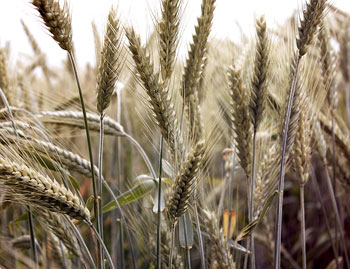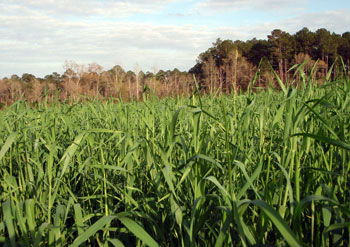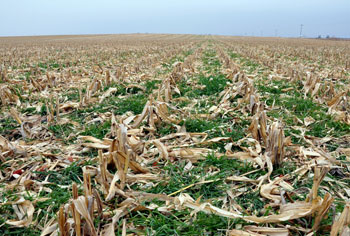Reasons to consider rye for fall cover
Ten reasons why cereal rye is a great fall cover crop.
 Why consider rye? Here are a few good reasons why cereal rye remains an excellent choice for a fall cover crop in many situations:
Why consider rye? Here are a few good reasons why cereal rye remains an excellent choice for a fall cover crop in many situations:
- Reduces weed seed germination (allelopathic effect).
- Provides significant organic material for soil improvement (up to 3-5 tons per acre if grown to maturity).
- Reduces or prevents soil erosion in fall and spring.
- Supplies nutrients to the following crops (good scavenger of surplus nitrogen and other nutrients, reducing nitrate leaching by tying up nitrate in rye plant material and making it available to following crops).
- Very winter hardy.

- Easy to establish.
- Germinates quickly.
- Provides structural support for an additional legume cover crop, such as hairy vetch.
- Establishes well without seed coverage by soil, as long as the soil is moist enough.
- On wet, clay soils, rye can help reduce excess spring soil moisture.
Sounds great! Are there any downsides? Of course…
- Potential for crop suppression (allelopathy or nutrient tie-up) with following crop (not likely).
- Other cover crop choices may be better for erosion control and rooting depth.
- Spring growth can “get out of control” if not killed early.
- If rye is used for grazing, there is not much fall growth available and forage quality is not as good as some other cover crop choices.
- Susceptible to small grain insects and diseases.
- Rye needs to be killed in the spring between 8 to 12 inches. If rye gets taller than 24 inches in the spring you may need to add starter nitrogen due to the rye tying up nitrogen.
- Regrowth may occur if not completely controlled (mature rye difficult to manage).
 All things considered, rye is a great choice for a fall cover crop. It’s not completely fool-proof, but as close as you can get. Your local Michigan State University Extension field crops educator can suggest seed sources and varieties suitable for your situation.
All things considered, rye is a great choice for a fall cover crop. It’s not completely fool-proof, but as close as you can get. Your local Michigan State University Extension field crops educator can suggest seed sources and varieties suitable for your situation.
For more details on rye and other cover crops suitable for Michigan agriculture, visit the Michigan Cover Crops website.



 Print
Print Email
Email